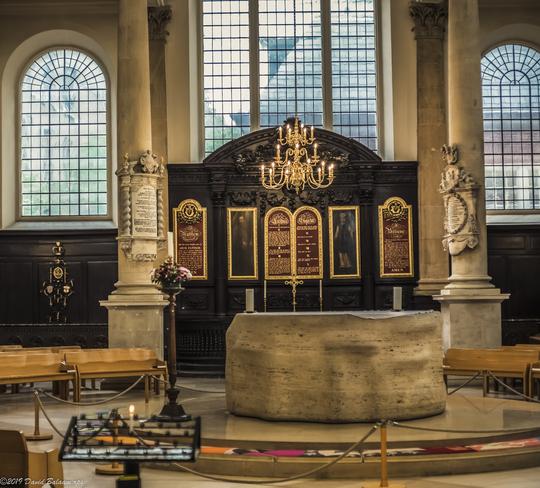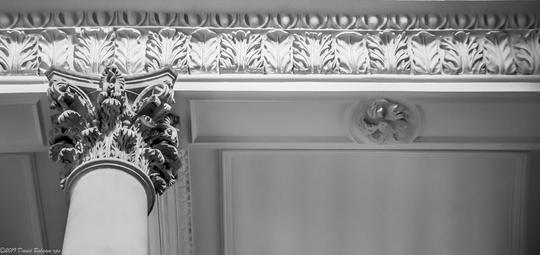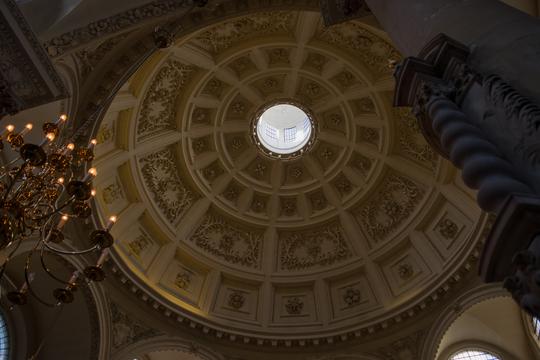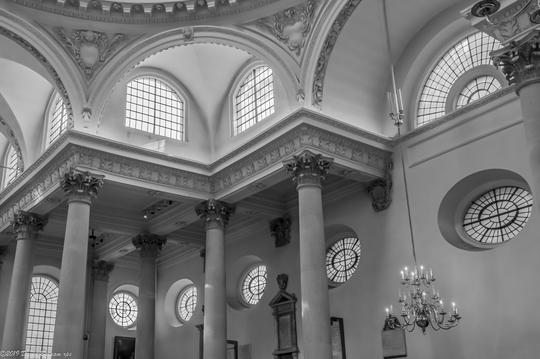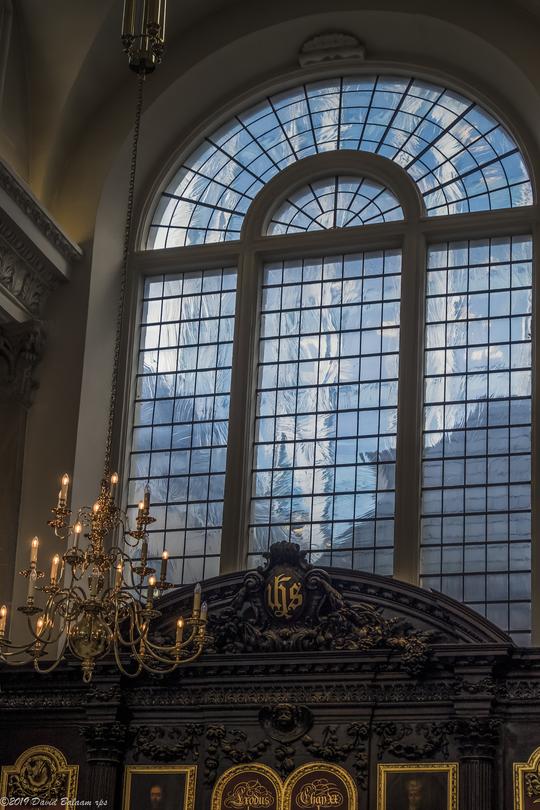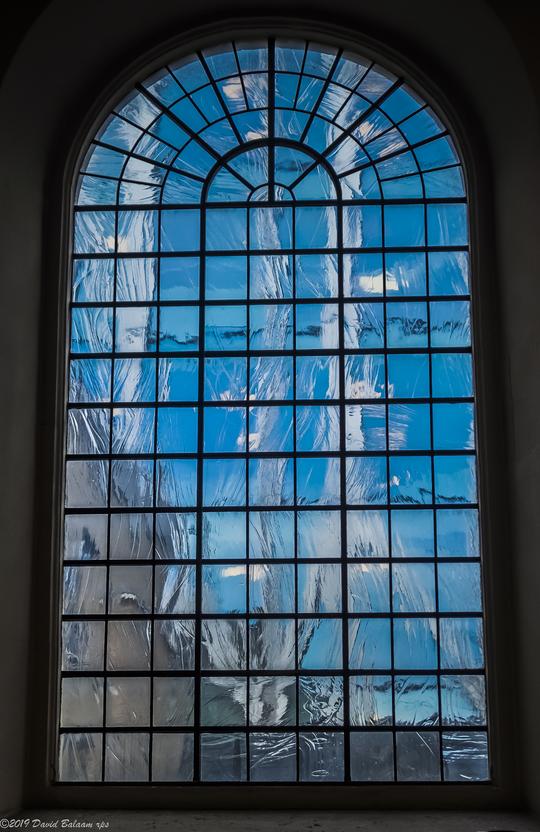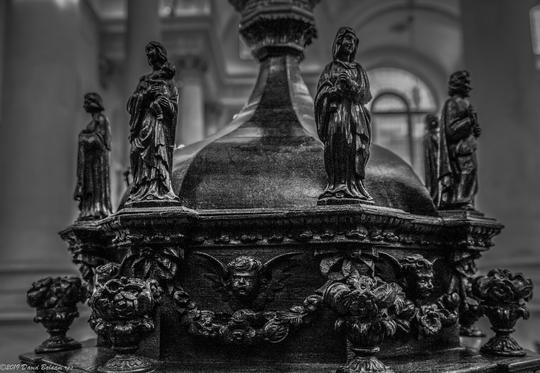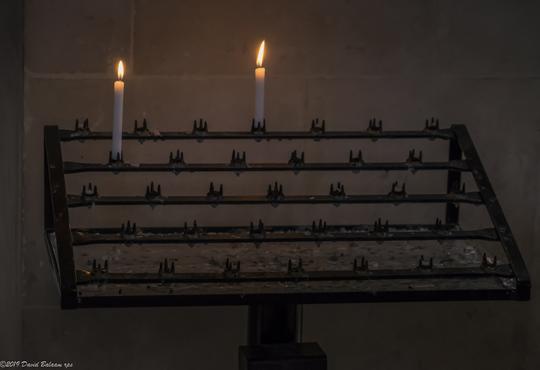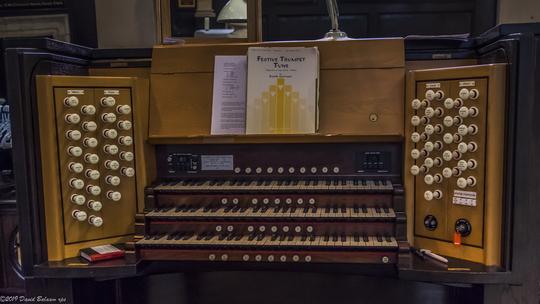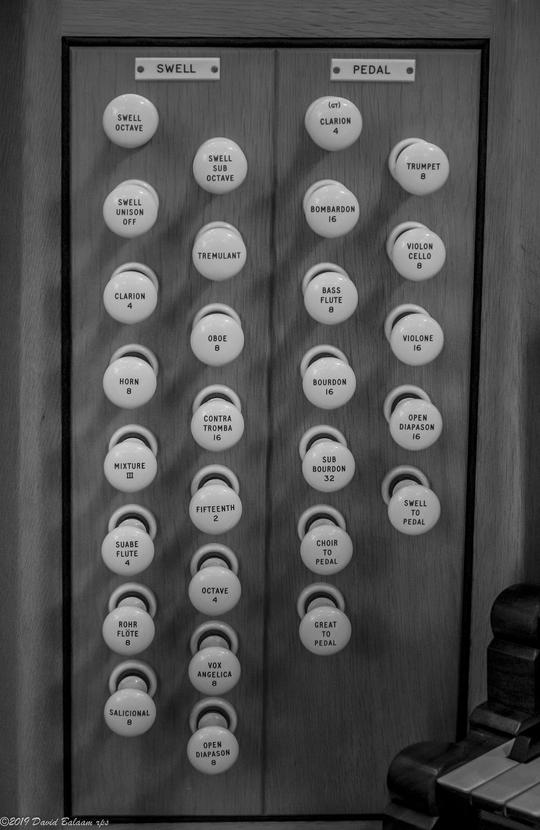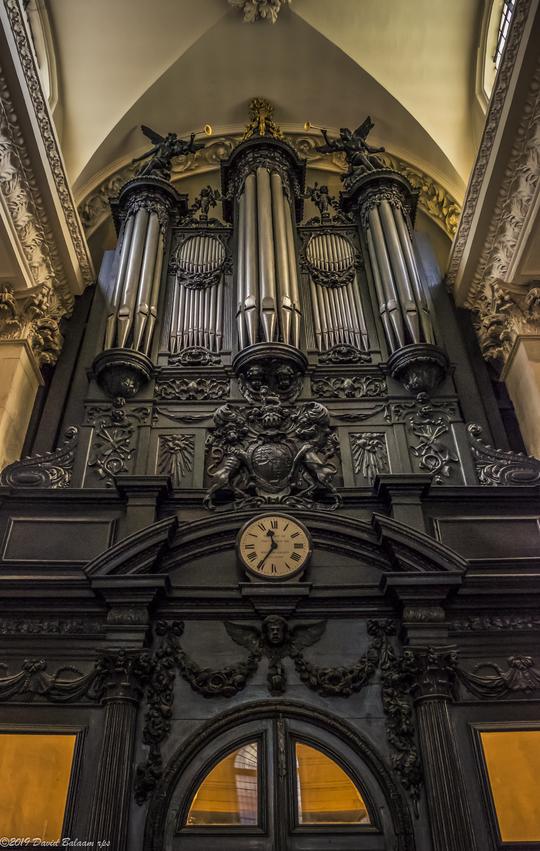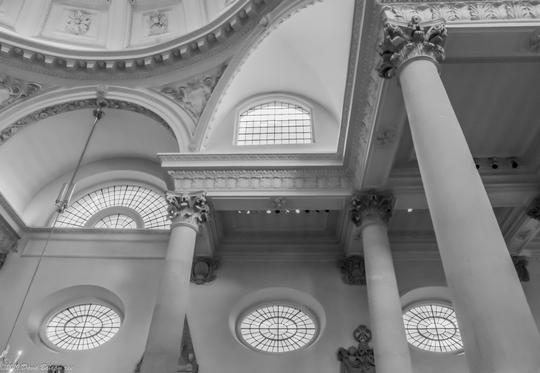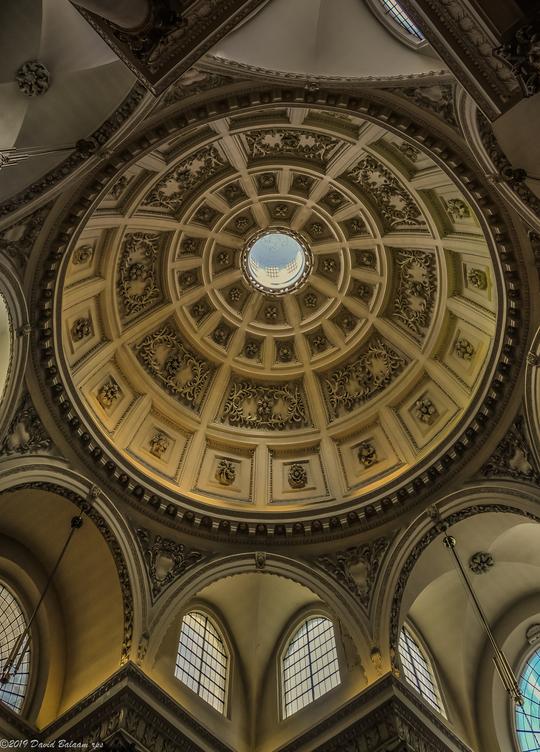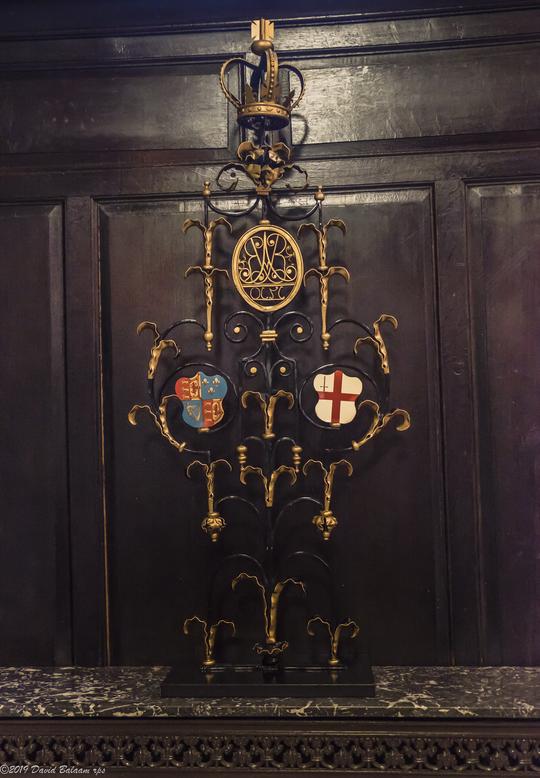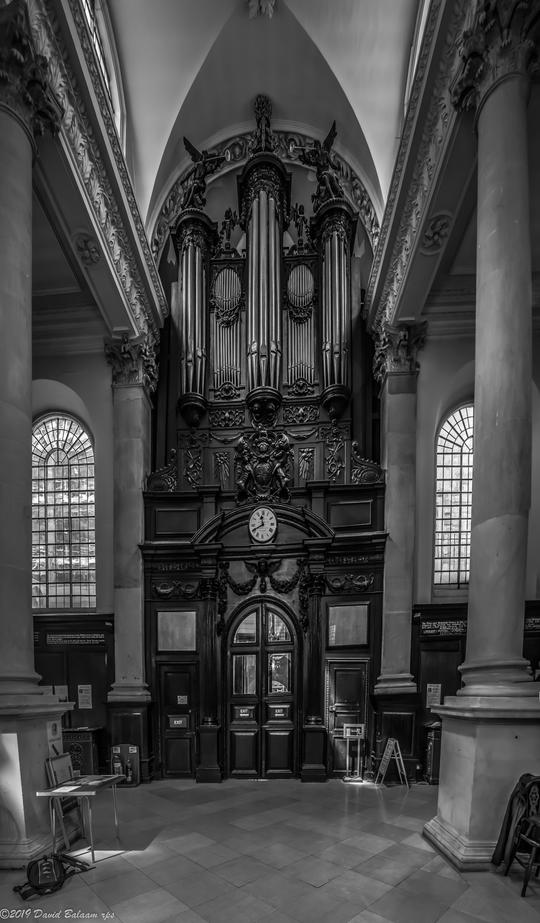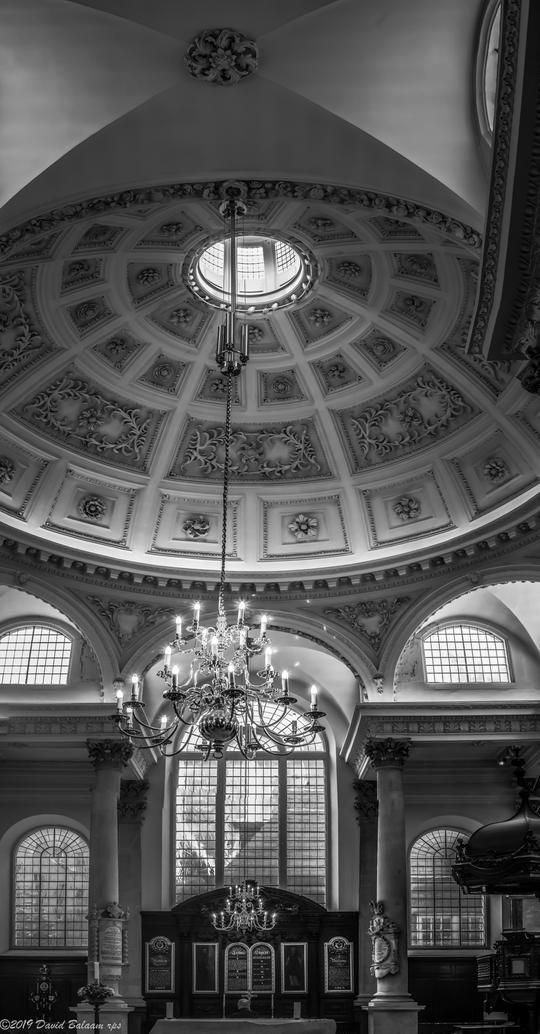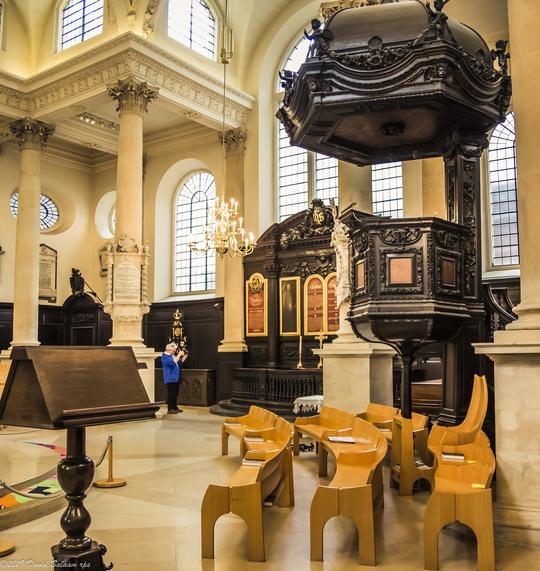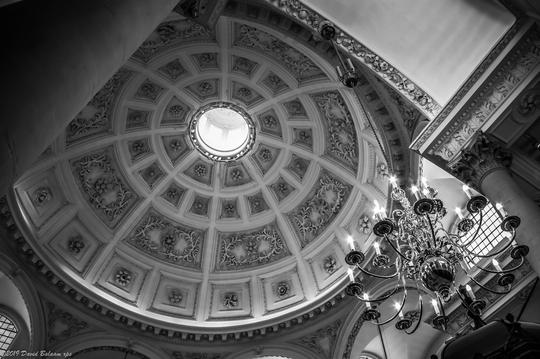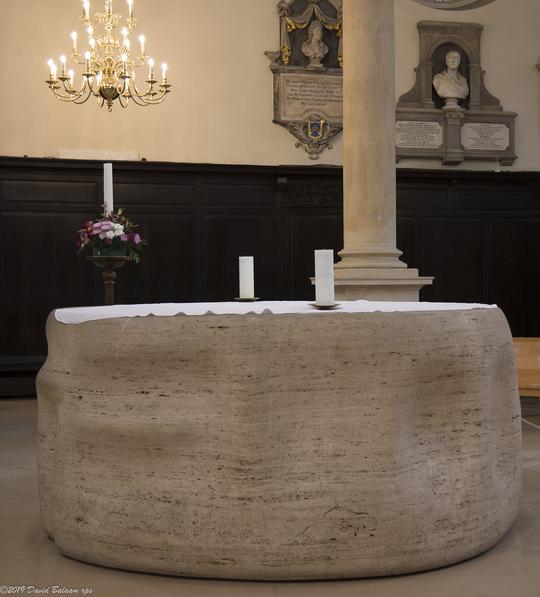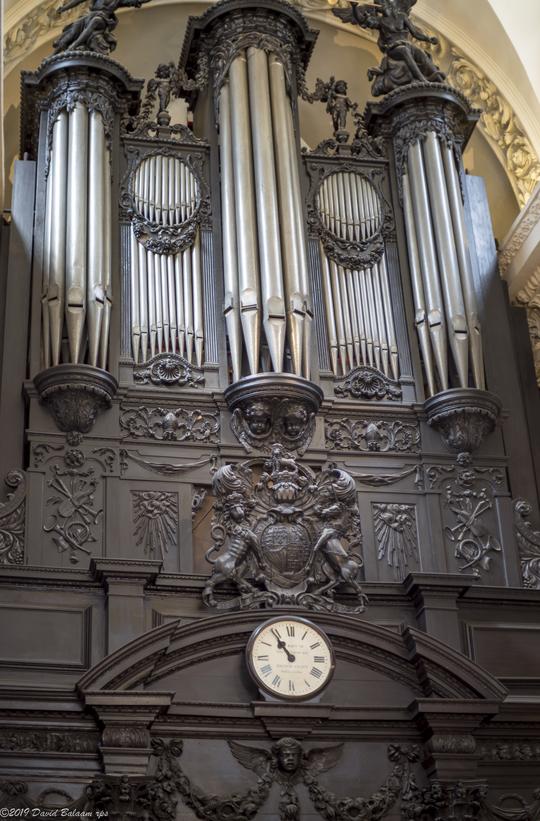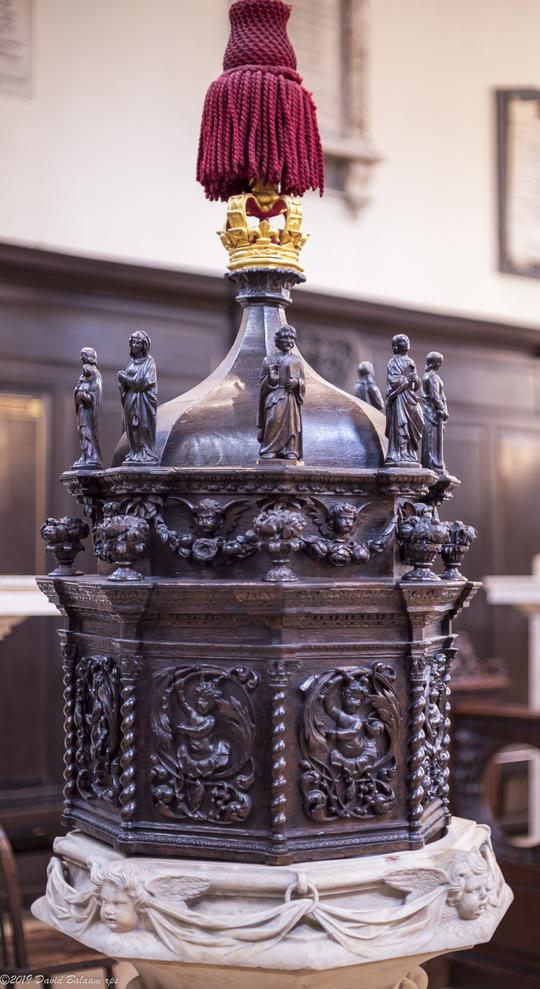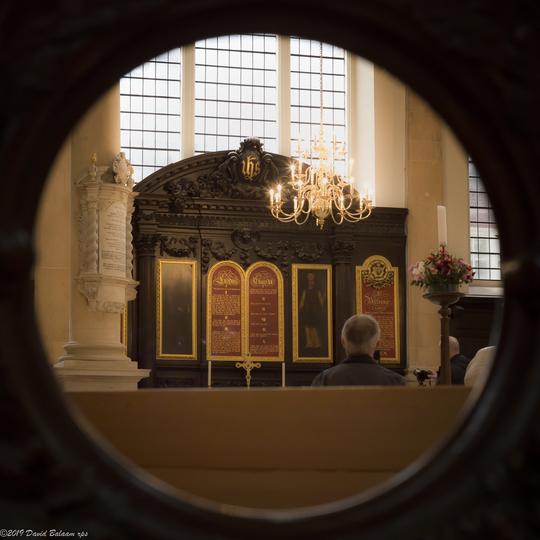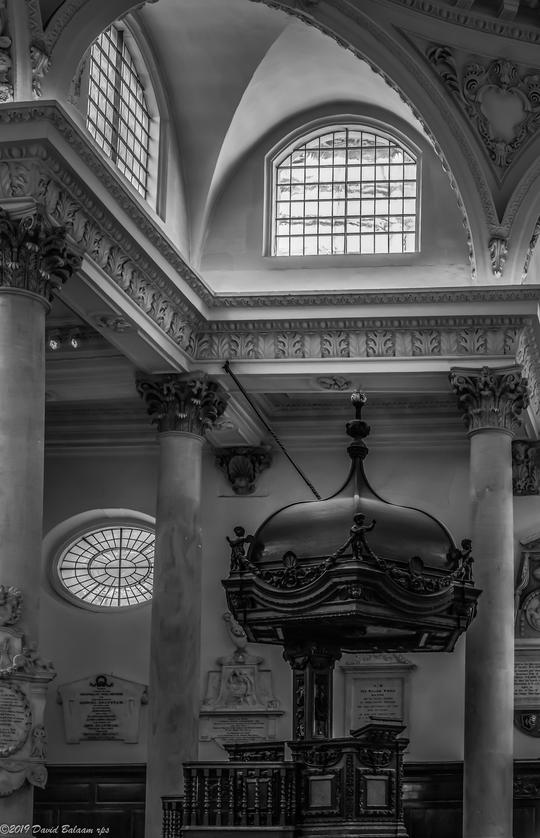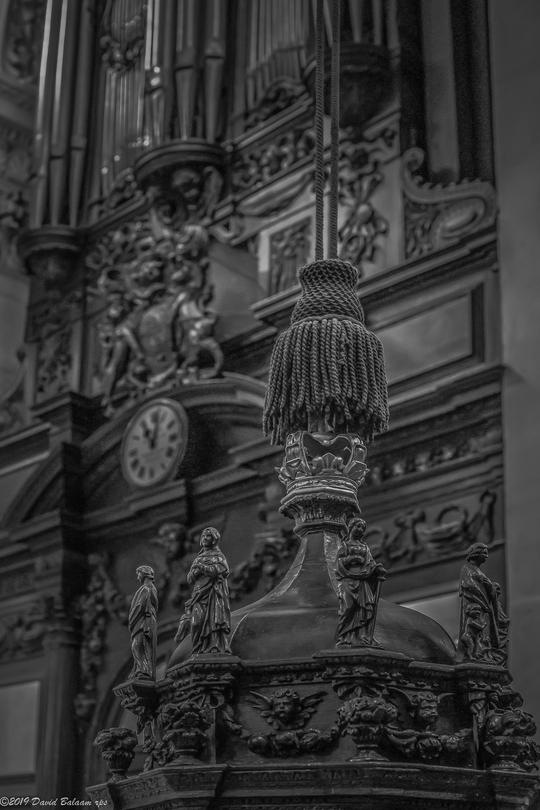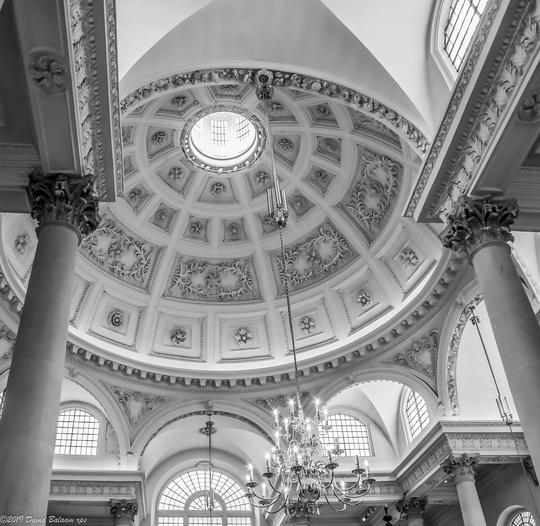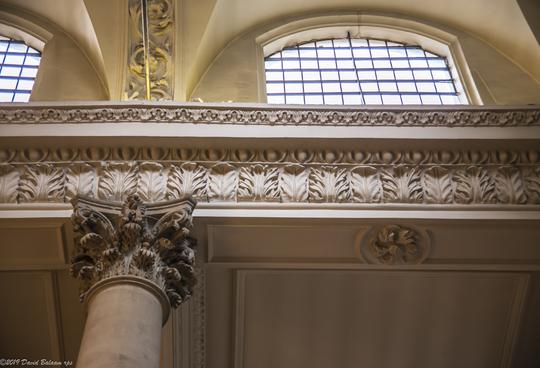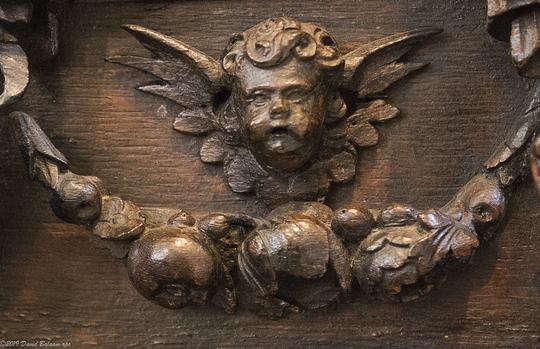St Stephen, Walbrook
In the second century A.D. a temple of Mithras stood on the bank of the Walbrook, a stream running across London from the City Wall near Moorfie1ds to the Thames. In this temple Roman soldiers sought valour and virility in shower-baths of hot blood from slaughtered bulls. After the recall of the legions to Rome in 410 A.D. the building became a quarry; the locals left only the foundations. These were discovered when Bucklersbury House was built in 1953-1957, and they are preserved to this day. However, there were no foundations of the Christian church which stood on the site and was a going concern in 1090 A.D. when it was given to the monastery of St. John by Eudo, Dapifer (cupbearer) to Henry I. It was Saxon, not Norman, and must have been built on the Mithraic foundations to hallow a heathen site. This could have been as early as 700 A.D., or as late as 980. The first stones of the new Church were laid on 17th December, 1672, by the Lord Mayor of London, the Lieutenant of the Tower of London, one of the Chicheley family, six members of the Court of the Grocers' Company (patrons of the Church), the Rector, two churchwardens and four other parishioners. Two months later the Vestry gave Wren 'or his lady' a silk purse with twenty guineas for 'his great care and extraordinary pains taken in contriving the design of the Church' - the usual formula for the person who designed a building, indicating that the design had been finalised. Wren's chief draughtsman was given five guineas; like Wren, he had been working simultaneously on designs for the Church as well as for St. Paul's Cathedral. The 63 feet (19 m) high dome is based on Wren's original design for St Paul's, and is centred over a square of twelve columns of the Corinthian order.
